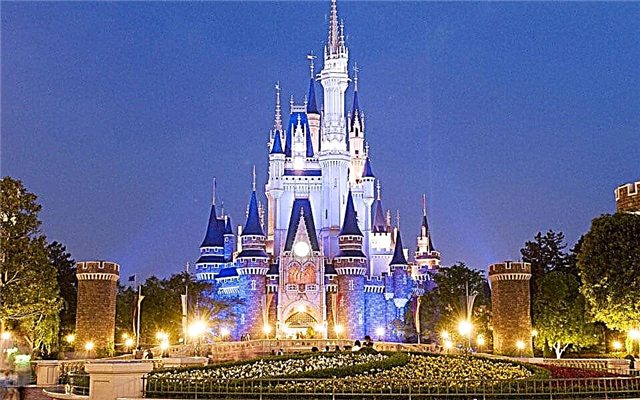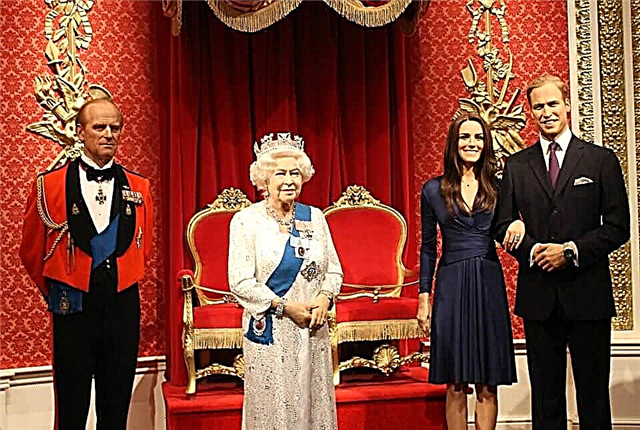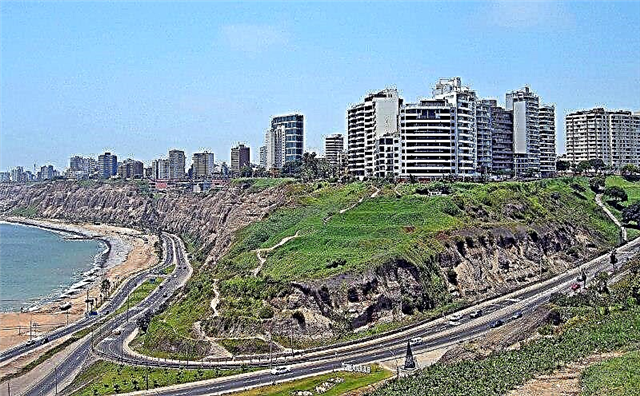Address: Russia, St. Petersburg, Primorsky prospect (metro station "Staraya Derevnya")
Building: 1909 - 1915
Architect: Gavriil Vasilievich Baranovsky
Coordinates: 59 ° 59'01.0 "N 30 ° 15'21.0" E
Federal cultural heritage site of the peoples of the Russian Federation
Content:
On Primorsky Avenue, you can see one of the most unusual cathedrals and temples in St. Petersburg - the Gunzechoinei Monastery. The religious building belongs to the largest Buddhist community in Russia, whose members profess Gelugpa Buddhism. Until recently, the St. Petersburg datsan was the northernmost Buddhist temple in the world.

General view of the Buddhist temple
The history of the datsan
By the standards of a religion that is more than 2500 years old, Buddhism entered the territory of our country not so long ago. The first mentions of Russian Buddhists appeared in the 17th century.
Under Peter I, Buddhists from the Volga Kalmykia and Transbaikalia came to the banks of the Neva. At first there were very few of them. At the end of the 19th century, there were 75 adherents of Buddhism among the inhabitants of the city, and before the First World War - 184 Buddhists.
At the beginning of the last century, Russian Buddhists were led by Aghvan Lobsan Dorzhiev. He was the official representative of the XIII Dalai Lama and made many efforts to bring Tibet and Russia closer together. In 1900, Dorzhiev arrived in the capital of the country to collect donations for the monastery school, met with Nicholas II and received permission from the emperor to build a datsan.

View of the Buddhist Temple from Primorsky Avenue
The unique project of the Buddhist temple was created by the talented architect and art critic Gavriil Vasilyevich Baranovsky. Money for the construction of the monastery was donated by Dorzhiev, Dalai Lama XIII, believers Kalmyks, Buryats and Russians. The plot for the new datsan was bought on a quiet outskirts, beyond the Black River.
Construction began in 1909 and lasted 6 years. The first service was held in the still unfinished datsan in honor of the 300th anniversary of the imperial dynasty. In 1915, when the church was opened, Dorzhiev became its priest.
In those days it was the first datsan in Europe. The creation of a Buddhist temple in St. Petersburg received great support in countries where Buddhism has long been practiced. King Rama V of Siam was friends with the Russian Emperor Nicholas II. As a gift, the Thai monarch sent an ancient statue of Buddha to St. Petersburg.

View of the facade of a Buddhist temple
Unfortunately, the history of the datsan began with tragic events. The St. Petersburg church appeared in turbulent times. Since 1914, Russia has participated in the First World War and spent huge amounts of money on the maintenance and armament of the army. Many Russians have become impoverished. It was hard for Buddhists in St. Petersburg to see the growing chaos in the country. In 1916 they left the city and the temple was empty.
During the Civil War, the datsan was plundered by looters. The library of Buddhist literature and the archive collected by Dorzhiev disappeared. From 1919 to 1921, the cult building housed a barracks for the Red Army.
In 1924, Buddhist prayers in the temple were allowed, but there were few believers. The Buddhist estate was owned by the Tibetan-Mongolian mission, which was then patronized by the USSR People's Commissariat for Foreign Affairs.

Entrance to the Buddhist Temple
The quiet time did not last long. In the early 1930s, the country launched a campaign to combat religion - "opium for the people." The repressions affected not only Christians, but also Muslims and Buddhists.
In 1937, when the Great Terror began, the NKVD began to develop a case about Japanese intelligence officers and saboteurs. A few Buddhist monks and Russian orientalist scholars who lived at the temple fell under suspicion of the special services. They began to be considered traitors to their homeland, agents of Japanese intelligence, and were arrested.
Most of those who were related to the datsan were soon shot. The scientist, writer and founder of the Buryat written language Bazar Baradievy Baradiin died innocently. The creator of the datsan and its first lama, Aghvan Dorzhiev, at the age of 85, died in Ulan-Ude after a brutal interrogation in a prison hospital. The remaining Buddhists were deported to Siberia and found themselves in the dire conditions of political prison camps.

Before the war, the Buddhist building was given to athletes, and the objects of worship were sent to the Museum of Religion and Atheism. During the war years, a powerful radio station was equipped in the former church, which was used to jam radio signals.
The situation changed for the better in 1960, when, at the request of Yuri Nikolaevich Roerich, the temple was adapted for laboratories belonging to the Zoological Institute of the Academy of Sciences. After 30 years, the building was returned to the Buddhists.
Architectural features, interiors and shrines
The original temple of red and purple granite is a real work of art. Due to the unusual shade of the facing stone, it is often called the "Violet Temple".

View of the Buddhist temple from the side of Savushkina street
The St. Petersburg datsan was built in accordance with the canons of architecture that were used for the cathedral temples of Tibet "tsogchen-dugan". At the beginning of the last century, Baranovsky Europeanized the traditional project and introduced elements of modernity into it. The building impresses with its bright decor of facades, gilding and colorful stained-glass windows, sketches for which were created by the famous artist Nicholas Roerich.
At the beginning of the history of the datsan, rare shrines and relics were brought here from the places where the Buddha's teachings were traditionally spread - Thailand, Tibet, Mongolia and Buryatia. During the years of devastation, all Buddhist artifacts were lost, but thanks to sponsors, the situation is gradually improving.
In the main altar of the datsan, you can see a 2.5 m high sculpture of Buddha, made by masters from Mongolia. According to the old tradition, it is made of papier-mâché and covered with gold leaf. The graceful jade Buddha throne is adorned with figures of mythological creatures.

View of the Buddhist temple from the Lipova Alley
In the green garden of the datsan there is a beautiful incense burner - "baypur". It is 120 cm high and weighs 230 kg. A massive bronze bowl is decorated with Buddhist symbols - a lotus flower of wisdom, the figure of an invincible snow lion, a mythical creature with a bird's head - Garuda, an intricate ornament in the form of curls and an image of the sacred Wheel of Teaching.
The incense burner at the temple is used to burn incense. According to Buddhist beliefs, thick fragrant smoke clears space and pacifies evil spirits.
Datsan today
Nowadays, the St. Petersburg temple plays the role of a spiritual center for all Buddhists of the North-West of Russia. Every day in the morning and in the afternoon, prayer meetings - khurals - are held here. Under the arches of the building, ancient mantras sound and prayers are offered for the well-being and happiness of all living. Buddhist holidays are celebrated in the datsan, religious ceremonies and rituals are performed.

Large bronze incense burner - "bypur"
The temple is doing great educational work. Teachers from Tibet, countries of Europe, Asia and America come to St. Petersburg and give lectures for everyone who is interested in the history and traditions of Buddhism. Meditation retreats are regularly organized here, as well as receptions by astrologers and doctors who specialize in traditional Tibetan medicine.
The Buryat folk festival Suharban is held annually in the parks on Elagin Island. During it, spectacular competitions of bator wrestlers and gambling competitions for the best archer are organized. Buryats perform with songs and dances in national costumes, and treat guests to traditional dishes of the Buryat cuisine.

Prayer drums
Useful information for visitors
According to the canons of Buddhism, people of any nationality and religion can visit the temple and attend prayer services. At the entrance, guests are asked to take off their hats and put on shoe covers. One enters the altar hall or "dugan" without shoes.The room is walked around in a clockwise direction, and do not turn their backs to the altar. For photo and video filming inside the datsan, you need to obtain a special permit.
Tourists who want to get acquainted with the history of the datsan can take part in group and individual excursions. Children attend the "Little Buddha" development course.
Everyone who comes to the temple is attracted by the shop of Buddhist goods. It sells books on Buddhism, supplies for daily spiritual practices, colored hi-morin flags, incense, stylish calendars, jewelry and souvenirs with Buddhist symbols.

Inside a Buddhist temple
How to get there
The Buddhist temple stands on the banks of the Bolshaya Nevka, opposite the Central Park of Culture and Rest. It is easily accessible on foot from the Staraya Derevnya metro station. Near the datsan there is a stop for trams, buses and minibuses "TsPKiO".











